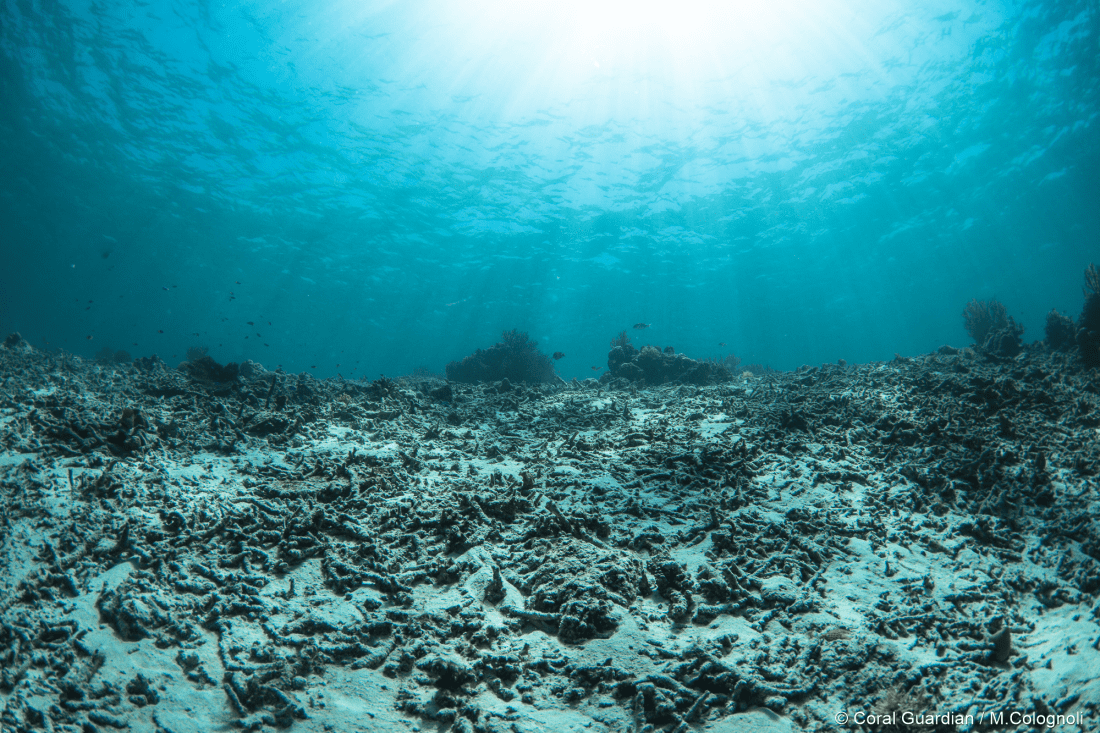Dynamite fishing can devastate coral reefs turning them to rubble, so left with nothing on which to grow, how do you reestablish an ecosystem? Non-profit Coral Guardian has been using metal frames to do just that, and the astonishing results off Hatamin Island, Indonesia, show that it can be very effective.
Prior to 2015, dynamite fishing was legal in the region as a method of retrieving fish by stunning them with explosives. While an easy way to scoop up animals, it has a catastrophic effect on the environment and disrupts food chains, destabilizing ecosystems.
Dynamite fishing turns reefs to rubble. Image credit: Coral Guardian/Martin Colognoli & Murdianto
Making dynamite fishing illegal was the first step to repairing the coral reefs around Hatamin Island, but it was also only the beginning. It had been regularly used since World War II meaning the damage was extensive, so conservation workers had to find a way to reestablish what had been lost.
“Our Coral Guardian team rebuilt the substrate by transplanting fragments of corals recovered in the area onto solid structures, called ‘nurseries’, to offer them the best possible conditions for development,” Coral Guardian told IFLScience. “Despite the strong currents in the area, this technique stabilises the coral fragments on a solid metallic structure where the corals will grow, bringing the reef back to life.”
That’s more like it. Image credit: Coral Guardian/Coco Tamlyn
“As a result of this work over a few years, the team is now collecting fragments from well-grown corals (some corals measure about 40 centimeters) for new coral transplants. This also allows the development of corals that may be more resistant to certain stressors such as climate change, having already gone through a first stress with the fragmentation.”
Their work has seen more than 53 000 corals restored, returning five times more fish species to the region in the last four years. They’ve been able to establish a marine protected area of 1.2 hectares (3 acres) with the help of a team of eight full-time employees on site, and a strong social impact with fisheries in the surrounding area.
The yellow lipped sea krait approves of this message. Image credit: Gilles Brignardello/Shutterstock.com
Among the species returned to the area are blacktip sharks (Carcharhinus limbatus), yellow-lipped sea kraits (Laticauda colubrina), manatees (Trichechus spp.), green turtles (Chelonia mydas), and blue whales (Balaenoptera musculus).
Transformations such as this are crucial to reaching goals for the planet, biodiversity, and climate, and should act as inspiration for anyone feeling down about the state of the world that in some areas we are moving in the right direction.
“Without corals, there are no more reefs and without reefs, we would lose over a quarter of all marine biodiversity,” explained Coral Guardian. “Furthermore, without marine biodiversity, local communities are unable to provide for their families through fishing. Indeed, over 550 million people depend on coral reefs directly for a living.”
We love a win-win situation.
You can support Coral Guardian’s work by adopting a coral or donating monthly.
Source Link: Photos Show What Seven Years Of Restoration Can Do For Coral Reefs
